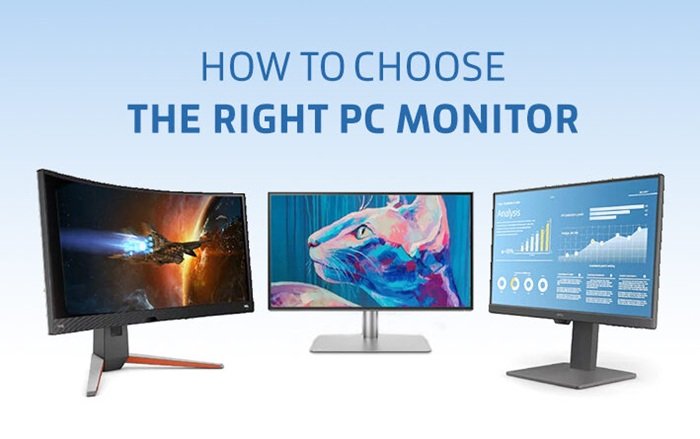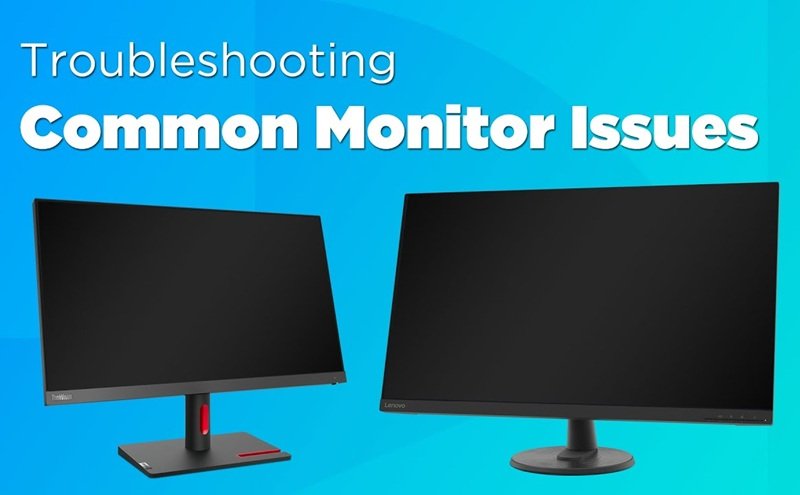Troubleshooting Monitor Issues Comprehensive Guide
Monitors are an essential component of any computing setup, allowing us to interact with our devices. However, when the monitor isn’t working correctly, it can be frustrating. A malfunctioning monitor could stem from various issues, ranging from hardware problems to simple connectivity or software configuration errors.
This article will guide you through the steps to identify and fix common monitor-related issues. From simple cable checks to more in-depth hardware troubleshooting, we’ll cover all bases to help get your monitor back up and running.
1. Power Issues: Checking the Monitor’s Power Source
Monitor’s LED Light Behavior
The first step in diagnosing a monitor issue is understanding its power status. Most modern monitors have an LED light that provides visual cues about its status. Here’s what you should look for:
-
No LED Light: This typically indicates the monitor isn’t receiving power.
-
Possible Causes:
-
Power cable not connected properly.
-
Power outlet malfunction.
-
Monitor power button failure.
-
-
What to Do:
-
Ensure the power cable is securely connected both to the monitor and the power outlet.
-
Try plugging the monitor into a different power socket or power strip.
-
If the issue persists, test the power cable on another device or replace it.
-
-
-
Blinking LED Light: A blinking light generally means the monitor is in standby or power-saving mode.
-
What to Do:
-
Press any key on the keyboard or move the mouse to wake the monitor from sleep mode.
-
-
-
Solid LED with No Display: If the monitor’s LED light is solid but there is no display on the screen, the issue might not be with power but with the input signal.
-
Possible Causes:
-
Loose or damaged video cable.
-
Incorrect input source.
-
A disconnected or malfunctioning graphics card.
-
-
What to Do:
-
Recheck all video connections to ensure cables are firmly plugged into both the monitor and the computer.
-
If you use HDMI, DisplayPort, or VGA, ensure you select the correct input source from the monitor’s menu.
-
-
2. Hard Reset the Monitor
If the monitor appears to be powered on, but no image is displayed, performing a hard reset can often solve the problem. Here’s how:
-
Turn off the monitor completely using the power button.
-
Unplug the monitor’s power cable from the wall socket.
-
Disconnect any video cables from both the monitor and the computer.
-
Wait for 5 to 10 minutes to allow the monitor’s internal circuits to reset.
-
Reconnect all cables and power the monitor back on.
This reset can help eliminate temporary software or hardware glitches that might be causing the issue.
3. Input Source Issues: Verifying the Correct Source
Monitors allow users to switch between different video inputs (such as HDMI, DisplayPort, VGA). If your monitor is showing a “No Signal” message or a blank screen, it might not be set to the correct input.
What to Do:
-
Use the OSD (On-Screen Display) menu to check or change the input source.
-
On most monitors, this is accessed by pressing the menu button, often located on the monitor’s bezel.
-
Navigate through the input options (HDMI, VGA, DisplayPort, etc.) and make sure the correct one is selected based on the type of cable connected.
-

4. Inspecting Cables and Connections
Many display issues arise due to faulty or loose cables. It’s essential to check every cable involved in your monitor setup.
Steps to Check Cables:
-
Video Cable Inspection:
-
Inspect the video cable (HDMI, VGA, DisplayPort, etc.) for visible damage. Frayed or bent cables can cause the monitor to fail to display anything.
-
If the cable is damaged, replace it with a new one.
-
Tip: If you’re using an HDMI cable, make sure it is firmly connected at both ends. HDMI cables that aren’t seated properly can lead to no signal being transmitted to the monitor.
-
-
Monitor Port and PC Port Check:
-
Inspect the monitor and computer ports for any bent pins or dust accumulation. Use compressed air to clean the ports if needed.
-
Ensure the cables are plugged in securely. Sometimes, a loose connection can lead to display issues.
-
5. Test the Monitor with Another Device
To isolate whether the issue lies with the monitor or the computer, test the monitor with another device.
What to Do:
-
Connect the monitor to a different computer or laptop.
-
If the monitor works with the second device, this suggests the problem is with your computer, not the monitor.
6. Check for Graphics Card and Display Settings Issues
If your monitor is working fine with another device, but not with your primary computer, the issue could be related to your computer’s graphics settings or hardware.
Graphics Card Check:
-
Reseat the Graphics Card:
-
If you’re using a dedicated graphics card, remove it from its slot and then carefully reseat it. Over time, cards can become loose, leading to a poor connection.
-
Ensure the power cables (if required) for the graphics card are properly connected.
-
-
Integrated Graphics:
-
If you’re using the computer’s built-in graphics (i.e., integrated graphics from the motherboard), ensure that your computer is set to use the correct graphics output.
-
You may need to check the BIOS settings to confirm which GPU is being used.
-
-
Check BIOS for Display Settings:
-
Access your BIOS settings by pressing the appropriate key (usually DEL or F2) during startup. In BIOS, you can check the display output settings and adjust them if necessary.
-
Read More: How to Create a Multiboot USB Drive A Complete Guide
Display Settings Issues:
Sometimes, the issue is with the display settings on your computer. If your computer’s display resolution or refresh rate is set incorrectly, the monitor might fail to show an image.
What to Do:
-
Adjust Resolution:
-
Boot into Safe Mode (press F8 during boot to access Safe Mode).
-
Right-click on the desktop, go to Display Settings, and adjust the resolution to a value that your monitor supports. It’s generally recommended to use the native resolution for best clarity.
-
-
Refresh Rate:
-
Also, check the refresh rate in Display Settings. For most monitors, a 60Hz refresh rate is common. Setting this too high could lead to the monitor not displaying anything.
-
7. Hardware Issues: Further Diagnosis
If you’ve gone through all the previous steps and your monitor still isn’t working, the issue may be with the monitor or the computer’s internal components. Here’s what to check:
-
Monitor Issues:
-
If the monitor shows signs of physical damage or age (e.g., flickering, color distortion), it may need professional repair or replacement.
-
-
PC Hardware Issues:
-
Check for Beep Codes: If your computer emits a series of beeps on startup, this indicates a hardware error. Check your motherboard’s manual to interpret the beep codes.
-
Test RAM and Other Components: Faulty RAM or other hardware components may cause your computer not to output video. Try reseating or replacing the RAM, or testing with a different CPU or motherboard if possible.
-
-
Faulty Graphics Card:
-
A faulty graphics card might prevent the monitor from receiving the proper signal. Testing with a different graphics card (or integrated graphics if available) can help diagnose this.
-
8. When to Seek Professional Help
If you’ve exhausted all the troubleshooting steps and the monitor still isn’t working, it might be time to consult a professional technician. Some issues might require advanced diagnosis, such as:
-
A faulty power supply within the monitor.
-
A malfunctioning graphics card that needs replacing.
-
Internal issues within the computer’s hardware that need expert attention.
Conclusion
Monitor issues can be daunting, but many of them can be resolved with careful troubleshooting. Start by checking the basics like power connections, cables, and input sources. If the problem persists, proceed with hardware checks, including testing the monitor on another device, reseating components, and adjusting display settings.
Remember, patience and methodical checking can often help identify the problem, allowing you to resolve the issue without unnecessary costs or replacements. If all else fails, seeking professional repair or replacement might be your best option.

